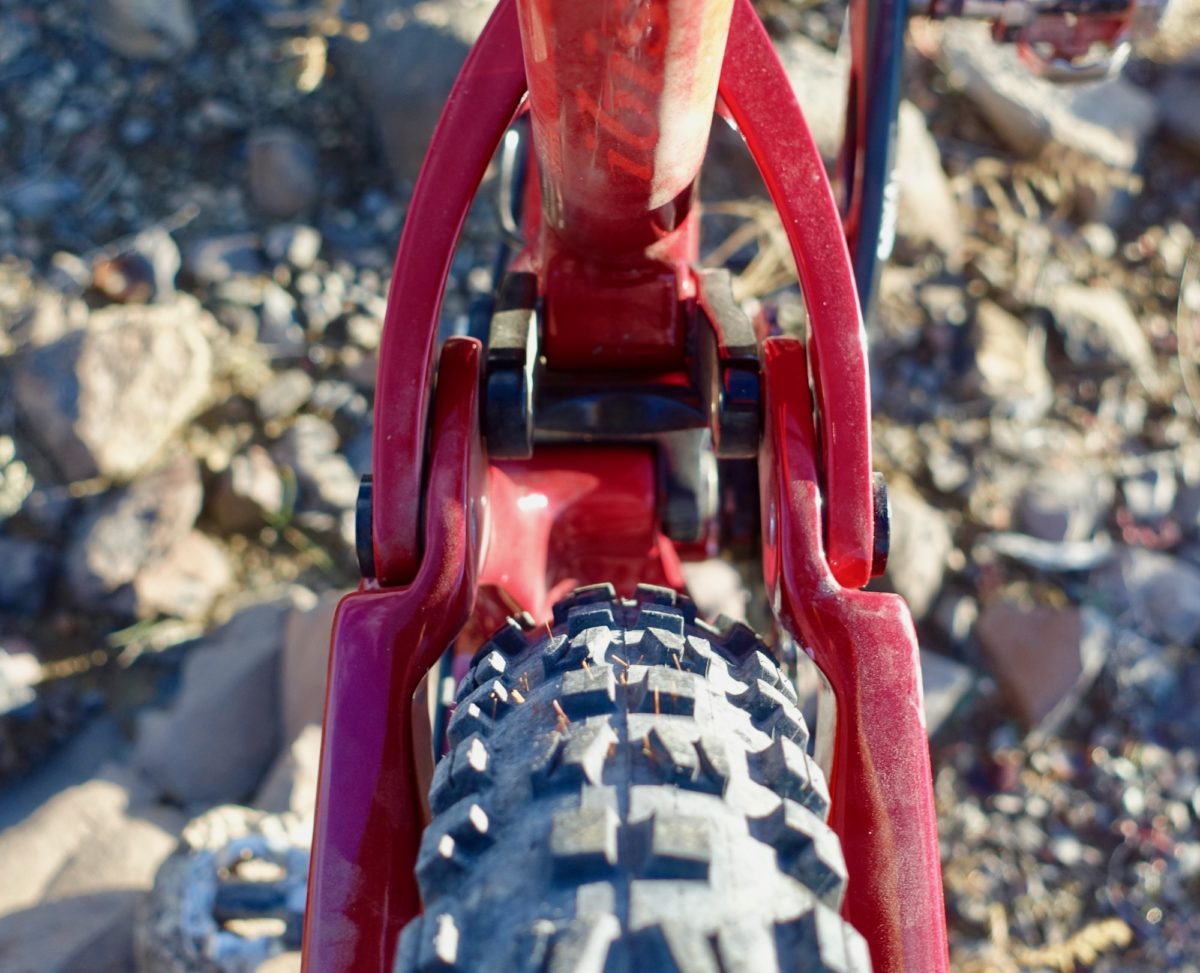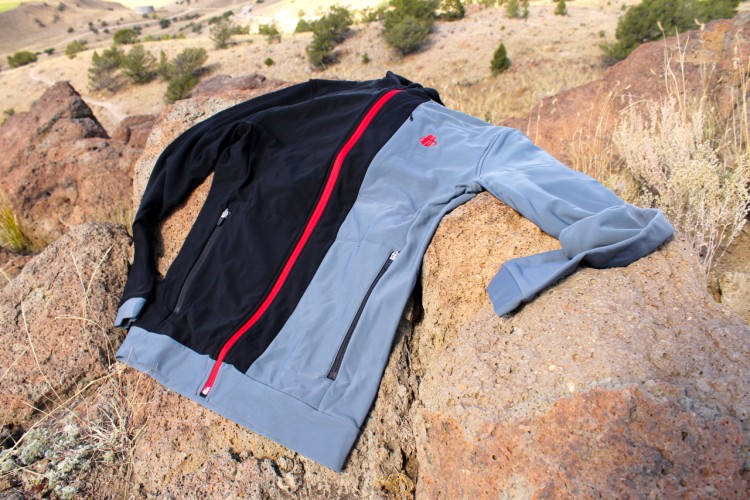
If there’s one thing that riders love to hate, it’s the marketing speak that comes along with incremental improvements. Does Boost 148 really create a stiffer wheel and rear end? Does changing the carbon layup of a frame actually create a real-world difference?
Analyzed individually, each slight improvement seems less than important, and even detrimental: bike costs rise, components are rendered obsolete at an ever-increasing rate, and consumerism rages. But when you add all of the seemingly-minor improvements together, one on top of the other, they add up to create a mountain bike that is markedly better than the bikes we were riding just two or three years ago.
Ibis’s latest version of their long-travel enduro bike, the Mojo HD4, shows just what can be accomplished with a constant drive to improve on an already stellar and widely-loved design. Shockingly, despite continued advancements, the HD4 tested here highlights just how well a modern mountain bike can ride without the most expensive components.
HD4 Updates

Here are the updates found in the latest Mojo HD model, according to Ibis:
- The HD4 features a completely redesigned geometry with a focus on stability and speed
- You can expect excellent big hit performance through increased progression in the shock tune
- After much experimentation and real-world testing, we’ve landed on a 64.9-degree head tube angle
- Reach has increased across the board (up by 4mm on small, 34mm on XL)
- Compatibility with the longest droppers
- 30% stiffer upper link, 40% stiffer lower link
- Refined carbon layup yielding greater frame stiffness overall
- Features DW-Link v5 kinematics, Dave Weagle’s most efficient system to date
- 27.5″ wheels, up to 2.8″ tires
- Available in Fireball Red, or Añejo Silver & Lime
Specs

The Mojo HD4 frame features a full-carbon construction with 153mm of rear travel that’s compatible with 160mm and 170mm forks. The frame offers DW-Link suspension, Boost 148 rear spacing, is ISCG 05 compatible, and has a threaded bottom bracket. It offers other goodies like “super versatile internal cable routing” and a down tube cable guard. Finally, the frame can accept 27.5″ tires in 2.3″, 2.5″, 2.6″, and 2.8″ (Plus) sizes, without any adjustment to the geometry or changing any other components. Claimed weight for the frame and shock in a size-medium is 6.6lbs. My test bike weighs in at approximately 29.6lbs.

With a 160mm fork, the HD4 offers a 64.9-degree head tube angle, 74-degree seat tube angle, 430mm chainstays, and a 435mm reach in the size-medium I tested. For more geometry details in your specific size, check out the geo chart here.

The version of the HD4 that I tested came specced with a SRAM GX Eagle 1×12 drivetrain, a 160mm Fox Float 36 Performance Series fork, Fox Float DPX2 rear shock, Shimano M615 brakes (180mm rotor front, 160mm rotor rear), a KS Lev SI dropper (sized to fit), an Ibis cockpit, Ibis 742 carbon rims with Ibis hubs, and Maxxis Minion 27.5×2.6″ Minion DHF WT tires front and rear.
Out on the Trail

Many long-travel bikes are offering more choices than ever before. From wheel size and tire size swaps to geometry tweaks, many enduro bikes now come with a geometry chip that you can flip to choose between either ultra slack geometry for descending, or a bit steeper geometry for improved pedaling. The Ibis Mojo HD4, however, doesn’t offer such an option. This means that Ibis had to pick the perfect geometry for modern enduro riding, and based on my testing, I think they nailed it.
Immediately after hopping on the bike and beginning the grind up to the gnar, the Mojo HD4 felt centered and balanced, even on steep climbs. While I could feel the slackness of the front end, I found the 64.9-degree head tube angle toed the line between wandery and tame very well. In some instances I could start to sense a bit of wander, but in most of my climbing it felt very controlled and natural.
Aiding this balanced geometry is the 153mm of DW-Link suspension, which tends to sit high in its stroke while pedaling. Compression switches on both the Fox Float DPX2 rear shock and the Fox 36 fork allow the rider to control the compression further, providing full lockout for real grinders. Ibis nailed the Mojo HD4’s pedaling capability despite designing a bike that’s longer, lower, and slacker (LLS) than ever before.
The LLS treatment pays off when descending. Pointing the HD4 downhill spawned a sensation of pure ecstasy. Confident geometry, perfectly centered, superb traction from 2.6″ DHF tires on wide carbon rims, dialed components–this bike rode as close to dream-like as possible.

A friend and I set up on a moderate, 3-foot ledge drop that we’d spotted to shoot some photos. While I sessioned the drop over and over again, the lighting never quite worked out for the perfect shot. But as I continued to repeat the hit, something felt different about this bike, and I couldn’t quite put my finger on it. Then my friend and photographer, Marcel, pointed it out: “That bike is so quiet!”
Indeed it was. Despite dropping to a flat, awkward landing, the HD4 was quiet. The only noise this bike made over the entire test was the sound of rubber on dirt and rock, the suspension cycling through its travel, and the low buzz of the (relatively quiet) rear hub.
That was it.
I attribute most of the quietness to the superb GX Eagle drivetrain. Regardless of price, this drivetrain is just incredible–and the affordable price point only makes it more attractive. The chain retention is superb, the range is mind-blowing, and the quality of the shifts leave nothing to be desired. For a deeper analysis, be sure to check out Aaron’s review.

While a quiet drivetrain is paramount, everything else on this bike came together to produce a quiet machine as well. The Ibis carbon wheels didn’t groan or protest, and the spokes didn’t ping or deflect awkwardly. All of the cable housing was quiet and rattle-free, despite significant internal routing. The frame and the linkages didn’t groan or squeak under stress. Shimano’s M615 brakes were squeal-free and powerful. Along with the great retention of the chain, the built-in chainstay and downtube protectors probably eliminated even more potential noise from chain and rock on bike. Everything was dialed. Everything was perfect.

Some of this quiet bike juju could be attributed to that new bike feeling and a lack of wear and tear, but I think it also points to the incredible attention to detail Ibis put into the Mojo HD4. From all of the seemingly-minor frame details like high quality internal cable routing and down tube protectors, to continually increasing the stiffness of the suspension linkage, all of these factors help create a bike that is quieter, stiffer, and more confident than ever before.
When the going got rough, this quietness still prevailed, although with a bit more urgent cycling of the suspension. Skimming through rock gardens was a breeze. Railing around berms, off-camber corners, and all manner of twistiness was excellent (although the lengthened wheelbase required concentration during tighter turns). When a bike rides this well, it’s hard to opine at length about specific conditions, because it performed admirably in everything I pointed it at.

During the bigger hits, like the ledge drop mentioned above, I truly appreciated the progressive HD4 suspension. While this progressiveness helps the bike ride higher in its travel while pedaling, it also helps with big hits, protecting against bottom out. While the DW-Link kinematics barely changed from the HD3, the new model exhibits “more progression [in] the shock leverage curve,” according to Ibis.
Personal Consideration: Storage Space

While I’ve been a fan of Ibis bikes for years and thought the frame design looked gorgeous, my recent affinity for frame bags forced me re-think whether an Ibis bike is right for me. Fortunately, Ibis recently introduced the Pork Chop frame bag to fit snuggly in the front triangle space. While not all that large, I did check out a Pork Chop mounted on a Mojo 3 and it’s a very smart use of space. I loved the internal wire frame, which eliminates the need for straps
In the main, lower triangle, the HD4 can still fit a 22oz water bottle, even with the piggyback Fox shock. Add a top tube bag onto the flattened out tubing, and for an enduro bike, the HD4 offers plenty of in- and on-frame storage space!
Personal Consideration: Dropper Post Fit

With the advent of longer and longer dropper posts, shorter riders like yours truly have begun running into problems: the dropper post specced on some bikes is too long. This means that the seatpost effectively cannot be dropped low enough to achieve proper saddle height for the rider. While this can be remedied by installing a dropper post with less drop, generally speaking, the rider wants as much post drop as they can get.
The best solution to this dilemma? Cut the seat tube.
Seat tube masts historically have risen above the top tube to provide support for the seatpost, with the height of the mast generally correlating to the frame size. However, with ultra-long droppers now available, progressive companies like Ibis have taken to cutting the seat tube as flush with the top tube as possible (see photo above). This allows the rider to spec the longest dropper post that they can physically use. Ibis even provides a dropper post fitting guide on their website. Kudos to Ibis for being so progressive.
Bottom Line

“Alright, he’s spent this review raving about how great this bike rides,” you’re thinking. “When is Greg going to get to his usual grouchy self and start complaining about something that’s not up to snuff? Maybe he can whine about the price tag?”
Well my friend, I can’t even complain about the price tag. While Ibis is known as a maker of boutique bikes and they’re a small company located in a very expensive town (Santa Cruz, CA), I’m honestly a bit shocked at what they’re selling these bikes for. The model I rode, with the specs discussed above, retails for $5,599. That’s a top-of-the-line carbon frame, with carbon wheels, excellent suspension, and a 12-speed drivetrain, in the $5,000 range. (Of course, you can upgrade the components and pay more $$$$.)
And you can purchase the HD4 for much less.
Drop the carbon wheels for alloy and you’re down to $4,799. Drop the GX Eagle drivetrain and opt for NX 1×11 and you’re down to an astonishing $4,099. You get a rocking carbon frame, all that engineering, and generally-incredible suspension and components. for $4K!
While $4K isn’t bargain-basement, the amount of bike that Ibis is offering for that price is downright impressive. With the high level of performance, the personal considerations that this bike checks, and the incredible value per dollar proposition that this bike offers, I’d consider the HD4 for my next daily driver.
Thanks to Ibis for lending us the Mojo HD4 for this review.




















